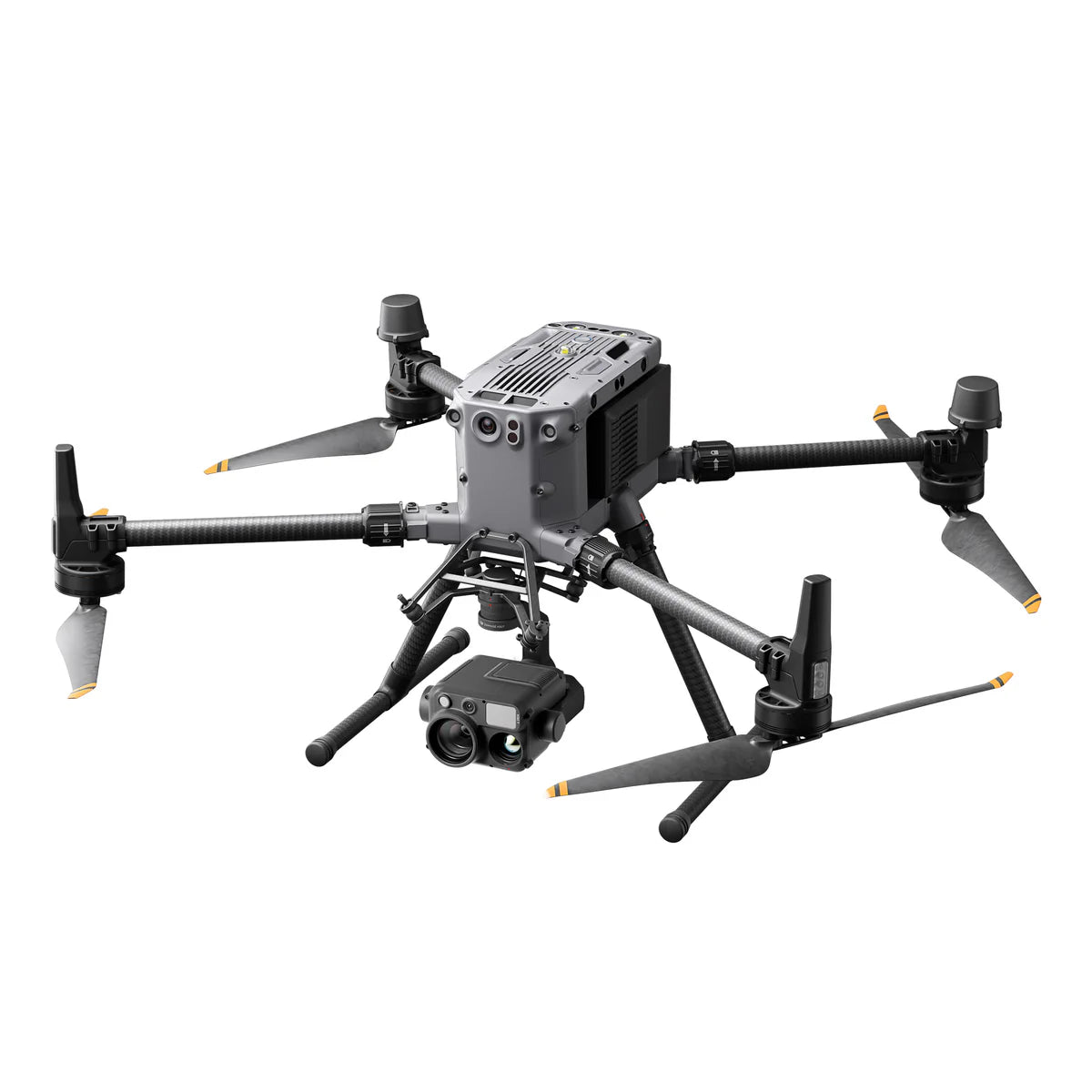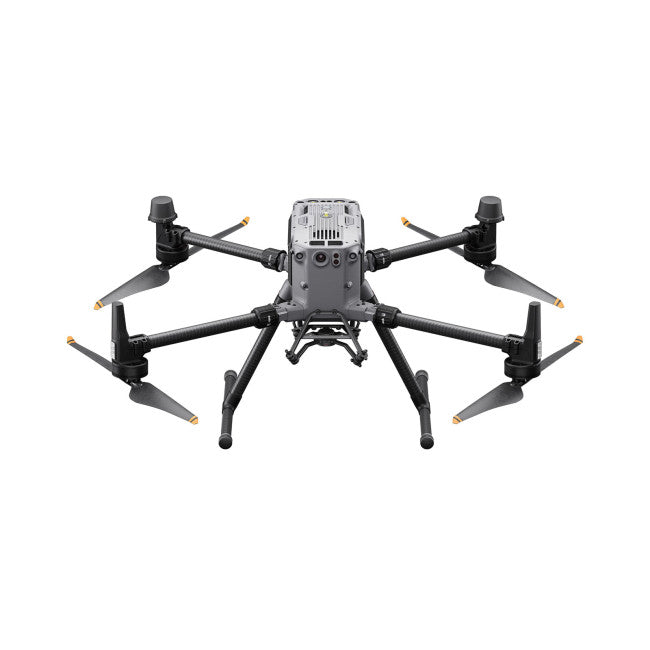There are a few different ways to detect gasses.
- TDLAS - Tunable Diode Laser Absorption Spectroscopy (TDLAS)
- OGI - Optical Gas Imaging
- Gas Sniffers

Tunable Diode Laser Absorption Spectroscopy (TDLAS) is a highly sensitive technique used to detect and measure specific gas concentrations in various environments. It works by passing a laser beam, tuned to the absorption wavelength of a target gas, through a sample. The gas molecules absorb light at certain wavelengths, reducing the intensity of the laser. By measuring the amount of absorption, the system can determine the concentration of the gas in real-time. This sensor flies through or over a gas cloud.
TDLAS is widely used in industries for monitoring gases like methane (CH4), carbon dioxide (CO2), and ammonia (NH3). It is particularly valuable in applications such as environmental monitoring, industrial gas leak detection, and emissions control, due to its high precision, fast response time, and ability to measure low gas concentrations.
The key advantages of TDLAS include:
- Selective and Accurate Detection: It can precisely target specific gas molecules, minimizing interference from other gases.
- Fast Response Time: TDLAS provides real-time measurements, making it ideal for dynamic monitoring environments.
- Non-invasive Measurement: The technique is non-contact, allowing for remote sensing of gas concentrations in harsh or hazardous environments.
TDLAS technology is commonly integrated into drones, enabling airborne gas detection and monitoring in hard-to-reach areas, such as pipelines, industrial sites, or remote natural gas facilities.

Optical Gas Imaging, is a technology used to detect and visualize gas leaks that are invisible to the naked eye. Using infrared cameras, OGI can detect gases by capturing their thermal signatures, as different gases absorb infrared light at specific wavelengths. The technology is primarily used to monitor volatile organic compounds (VOCs), methane (CH4), sulfur hexafluoride (SF6), and other harmful or environmentally significant gases.
Here's how OGI works: The camera is tuned to infrared wavelengths absorbed by the target gas. When gas escapes into the atmosphere, the camera shows a visual representation of the gas plume, allowing for easy detection of leaks or emissions.
Key benefits of OGI:
- Real-Time Detection: OGI allows for the immediate identification of gas leaks.
- Non-Invasive: It can detect gases from a distance, making it ideal for hard-to-reach areas like pipelines, storage tanks, or industrial plants.
- Enhanced Safety: Operators can detect potentially dangerous gases without the need for direct contact or exposure.
- Environmental Monitoring: OGI is widely used in environmental and industrial applications, particularly in oil and gas, chemical plants, and refineries, to comply with emissions standards and minimize environmental impact.
OGI is also commonly integrated with drones to provide aerial monitoring over large industrial areas, helping in the rapid identification and mitigation of leaks.

A Gas Sniffer, also known as a gas detector or gas sensor, works by detecting the presence and concentration of gases in the air. It typically uses specialized sensors to identify specific gases or a range of gases, and it is widely used in industries like oil and gas, environmental monitoring, and industrial safety. This sensor style requires flying through a gas cloud.
Here's how a gas sniffer works:
Gas sniffers use a variety of detection sensors. The core component of a gas sniffer is its sensors, which are designed to detect specific gases, such as methane (CH4), carbon monoxide (CO), or volatile organic compounds (VOCs). Different sensors are used depending on the gas type, and they function by interacting with the target gas molecules.
- Electrochemical Sensors: Used for detecting toxic gases like carbon monoxide or hydrogen sulfide, these sensors measure how the gas reacts chemically at an electrode to produce a measurable electric current.
- Infrared Sensors: These are used for gases like carbon dioxide or methane. The sensor works by passing an infrared beam through the gas. The presence of gas absorbs certain wavelengths of light, and the sensor measures the absorption to determine gas concentration.
- Catalytic Bead Sensors: Often used for detecting combustible gases, this sensor heats the gas to ignite it. The heat generated from combustion changes the electrical resistance in the sensor, which is measured to detect gas concentration.
- Photoionization Detectors (PID): Used for detecting VOCs. These sensors ionize gas molecules using UV light and measure the resulting ions to determine the gas concentration.
Once the gas interacts with the sensor, it produces a measurable signal (such as a change in voltage, current, or resistance) that is directly related to the gas concentration. The gas sniffer converts this signal into readable data, which shows the concentration of the gas in real-time.
When integrated with drones, gas sniffers are mounted on the UAV and can detect gas leaks or pollution over large areas. The drone carries the sniffer over pipelines, industrial sites, or specific geographic regions, collecting gas concentration data from the air. This setup allows for quick and efficient gas detection in hard-to-reach or dangerous areas.
In summary, a gas sniffer works by using sensors to detect specific gases, convert their concentrations into measurable data, and provide real-time alerts. When integrated with drones, it enables large-scale, efficient gas detection across various industries.

Now that you understand the differences between various gas detection methods, you can make an informed decision on which approach best suits your specific needs and applications. Let’s start by focusing on Optical Gas Imaging (OGI), a powerful tool for real-time gas leak detection.
OGI technology is particularly effective because it offers live visual feedback by capturing a video of gas leaks as they happen. This real-time detection is crucial for industries where immediate response is needed, such as in oil and gas facilities, chemical plants, or environmental monitoring. The OGI system doesn’t just identify leaks; it also provides critical geo-location data by pinpointing the latitude and longitude of the detected gas leak, which enhances accuracy and enables quick intervention.
For operations that demand fast, on-the-spot deployment, OGI systems are highly reliable. They are capable of detecting a wide range of gases, making them versatile for various applications. Whether you're dealing with methane, hydrocarbons, or other volatile gases, OGI offers an efficient solution.
When speed is critical and the situation demands rapid deployment, OGI sensors are your go-to choice. Their ability to visualize leaks in real-time while delivering precise location information makes them invaluable for quick assessments, helping teams respond faster and more effectively to mitigate risks.

If your objective is to gather data consistently over multiple missions, a Tunable Diode Laser Absorption Spectroscopy (TDLAS) sensor or a sniffer sensor for methane may be a more suitable solution. Unlike Optical Gas Imaging (OGI), which is ideal for immediate leak detection, TDLAS and sniffer sensors are designed for systematic data collection and analysis over time.
These sensors allow you to monitor gas levels and environmental conditions continuously and accurately during repeated surveys. The TDLAS sensor, in particular, uses laser-based technology to measure the concentration of methane (or other gases) by detecting how much of the laser is absorbed by the gas molecules in the air. This method is highly sensitive and effective for tracking gas concentrations across different areas.
The sniffer sensor also enables direct gas detection, but with the added benefit of being able to store data for future analysis. This is essential for situations where you need to analyze trends or measure cumulative exposure to gases over time. With this kind of sensor, you can precisely map gas emissions across multiple locations or detect gradual leaks that may not present an immediate risk but could become significant over time.
For data-driven decision-making, these sensors provide the granularity and historical tracking necessary to understand how methane levels or other gases fluctuate over extended periods. This makes them invaluable for applications such as regulatory compliance, environmental monitoring, or pipeline inspections where the ability to review and analyze detailed gas data is crucial.
By allowing you to collect data in real-time and store it for later analysis, TDLAS and sniffer sensors ensure that your inspections are not only accurate but also repeatable and scalable across multiple missions.



